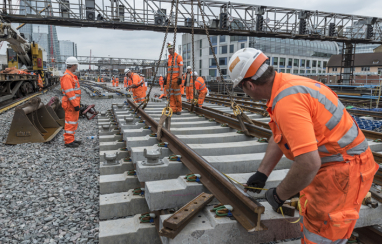- Air MUS12 Jordan 3LAB5 Gamma Blue Metallic Silver - MUS12 Jordan Air 200e Men Dc9836-200 - 200 - MUS12 Jordan Air 200e Men Dc9836
- IetpShops - Adidas Alphaedge 4D Reflective - Adidas Originals Spring - Summer 2007 Look Book
- Sneakers Draked Viola
- Nike air jordan max 13 hologram Bred Black Red 2019 Release Date , air jordan max 1 rebel chicago white varsity red black , IetpShops
- DJ9292 , Dunk High Up Sail Sneakers , Nike AIR PEGASUS 83 PRM - 200 , IetpShops STORE
- air force 1 shadow
- Usher Air Jordan 11 Gold Sample
- Air Jordan 1 Satin Black Toe CD0461 016 2019 Release Date 4
- on feet air jordan 1 low chicago
- nike air force 1 boot cordura black wheat university gold do6702 001
- Home
- News and analysis
- Info hubs
- Events
- Video
- Case Studies
- About us
- Magazine
- Advertising
Produced for the industry by the Association for Consultancy and Engineering
News
Mind your head: Campaign launched to reduce bridge strikes

It's a problem costing £23m every year in damages and delays. Every day on average five HGVs or oversized vehicles will hit railway bridges. So Network Rail and Transport for London have launched a new campaign aimed at HGV drivers and operators to tackle the problem.
The campaign has been launched to coincide with the annual end of October peak in bridge strikes. According to Network Rail, research shows nearly 10 bridge strikes occur daily at the end of October and into early November each year. The same research also shows that 43% of HGV drivers admit to not knowing the size of their vehicle and 52% do not take bridge height restrictions into account when planning journeys. On average each bridge strike costs about £13,500 and brings two hours in train delays while bridges are checked for damage.
Launching the campaign, Network Rail chairman Sir Peter Hendy, a former driver for London Bus, said: "Size does matter when you're a professional driver in a heavy vehicle. Not knowing the size of your vehicle or load could lead to a serious accident, and the loss of your licence. Every incident creates potential delay for tens of thousands of passengers and potential costs for taxpayers, and this is happening multiple times a day.
“It's only a matter of time before road or rail users are killed as a result of this carelessness; we need professional HGV drivers and their operator employers to get behind and support this campaign to eradicate bridge bashing, which reaches epidemic levels at this time of year."
Britain's most frequently bashed bridge is Stuntney Road bridge in Ely in Cambridgeshire which has been hit 113 times since 2009, Network Rail says. Kenworthy Road bridge in Homerton, comes a close second with 99 strikes in the last eight years and a bridge on Thurlow Park Road in Tulse Hill has been struck 92 times.
The NR and TfL campaign will involve fitting additional steel beams to bridges struck most often to reduce damage and knock-on effects. Both organisations will also be engaging with haulage and transport industry bodies and working with local authorities to make sure bridge height signs are correct and clearly displayed. The campaign is also calling for stiffer penalties for drivers when strikes do occur.
Glynn Barton, director of network management at TfL, said: “Disruption to the transport system caused by a small number of drivers not knowing the heights of their vehicles is completely avoidable. The simple act of checking the height of your vehicle and being vigilant for bridge height road signs will make a huge difference to keeping our roads and railways reliable for everyone.”



